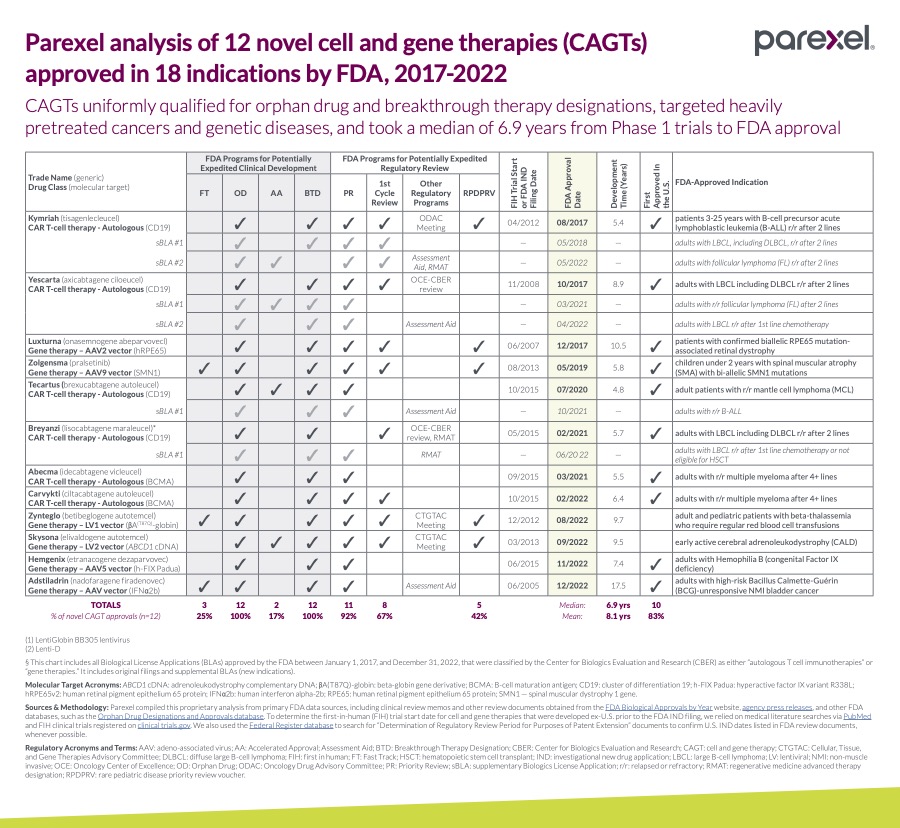Learn more about Parexel's cell and gene therapy research
At Parexel, we deliver innovative trial designs, built on a deep understanding of the patient journey. Our Cell and Gene Therapy Center of Excellence aggregates best practices from across the development lifecycle to help our customers navigate frequently changing regulatory hurdles and accelerate the treatment journey to patients. Parexel supports sponsors to take control of their regulatory path and reduce compliance risks to deliver a faster, smarter route from proof of concept to marketing authorization.
Accelerate your cell and gene therapy development and maximize the chances of market success with Parexel.

